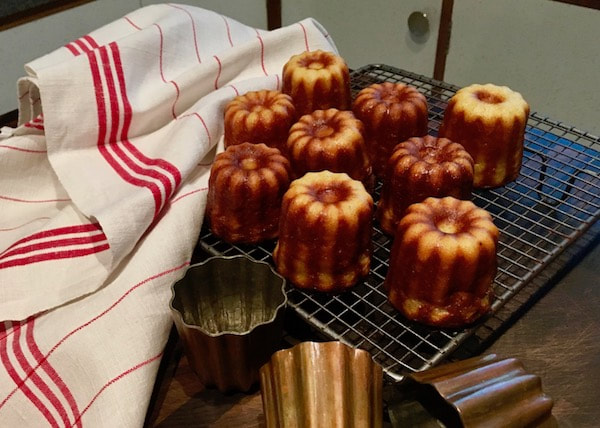|
Someone was making muffins for a morning tea. To make them “healthy” she wondered about using alternatives to castor sugar such as agave, coconut sugar, honey or maple syrup. This got me thinking of our history with sugar. Until very recently, sugar was scarce enough to be kept for very special occasions – feasts, galas, religious festivals. The same could be said also of deep-fried food. (Think sugar coated donuts filled with red jam.) On scanning my books, the very special foods for special occasions were sweet. The ingredients were saved up, stored, put away for a massive, often communal bake. Now, we have desserts, cakes, pastries and donuts whenever we want and that means generally every day. How quickly did the very pretty, heavily iced, little cup-cakes take off! No wonder we look at sugary foods with trepidation. If you’re having a morning tea or say, a dessert for a birthday celebration, you’re going to use sugar. Forget the alternatives. Sugar is sugar is sugar – forget the shape it takes, the mystery of coconut sugar, the romance of maple syrup, the longevity of honey, the fake “health" benefits of agave. It’s all sugar and that white stuff is the only one that really makes a good cake. Now, treat yourself to a canelé. These appeared in Paris patisseries about 25 years ago and the story goes that they’ve come out of Bordeaux but with a confused and long history "dating back hundred of years". Stories range as far afield as artisan barrel makers and convent nuns to apiarists and Jewish bakers. My cynicism tells me it could be “fake news” but a fraternity of bakers in Bordeaux has been formed to safeguard the purity of the canelé. They’re a seemingly plain little cake but totally irresistible. Baked in special copper, fluted moulds, they are crisp on the outside and chewy, custard-like inside. Dare I risk saying they’re a little bit like a sweet Yorkshire pudding. The cost of the moulds is ruinous and the sort of thing you only buy with heady, devil-may-care abandon on holidays. Silicon moulds are now available at a fraction of the cost, standard size and mini. The “crust” is not as crisp but… They do contain sugar (hence the crispy exterior) but just eat them now and again. As Michael Pollan (my food hero) reminds us, you can eat fast foods such as waffles, hamburgers and chips (French fries), just make them yourself. This will take time and prevent you from having them too often. I haven't tried them in a plain mould e.g. muffin tin or dariole, but it's worth a go. Like a pancake batter, this mix needs to rest overnight and can even go longer. You can make up a jug-full and cook them day after day. (But that defeats Michael Pollan's maxim.) The inside of the mould should be coated in bees' wax, helping the dark caramel-like exterior of the cake but this is cumbersome. I've tried it and now just butter them. Canelés - (This is easily done either by hand or with an electric mixer or Magimix.) Let batter rest for 6 hours or better still, make it the day before. 2 eggs + 1 yolk 500 ml proper milk (not low-fat) 225 gm castor sugar 50 gm butter (+ extra for moulds) 100 gm plain flour Vanilla (*real but your choice of medium) 2 tbsp dark rum
Comment below or 👍🏼 Send me an image if yours are gorgeous. [email protected] www.cathkerry.net
3 Comments
ROSA MATTO
7/5/2019 01:25:57 pm
I do not have these gorgeous moulds but I have brioche moulds which I will use and send you photos of the results.
Reply
7/5/2019 02:05:21 pm
Adam has just sent great images of them being made, en masse in Bordeaux. The moulds were silicon. Yes, please try out the brioche moulds.
Reply
Leave a Reply. |
Categories
All
|

 RSS Feed
RSS Feed
